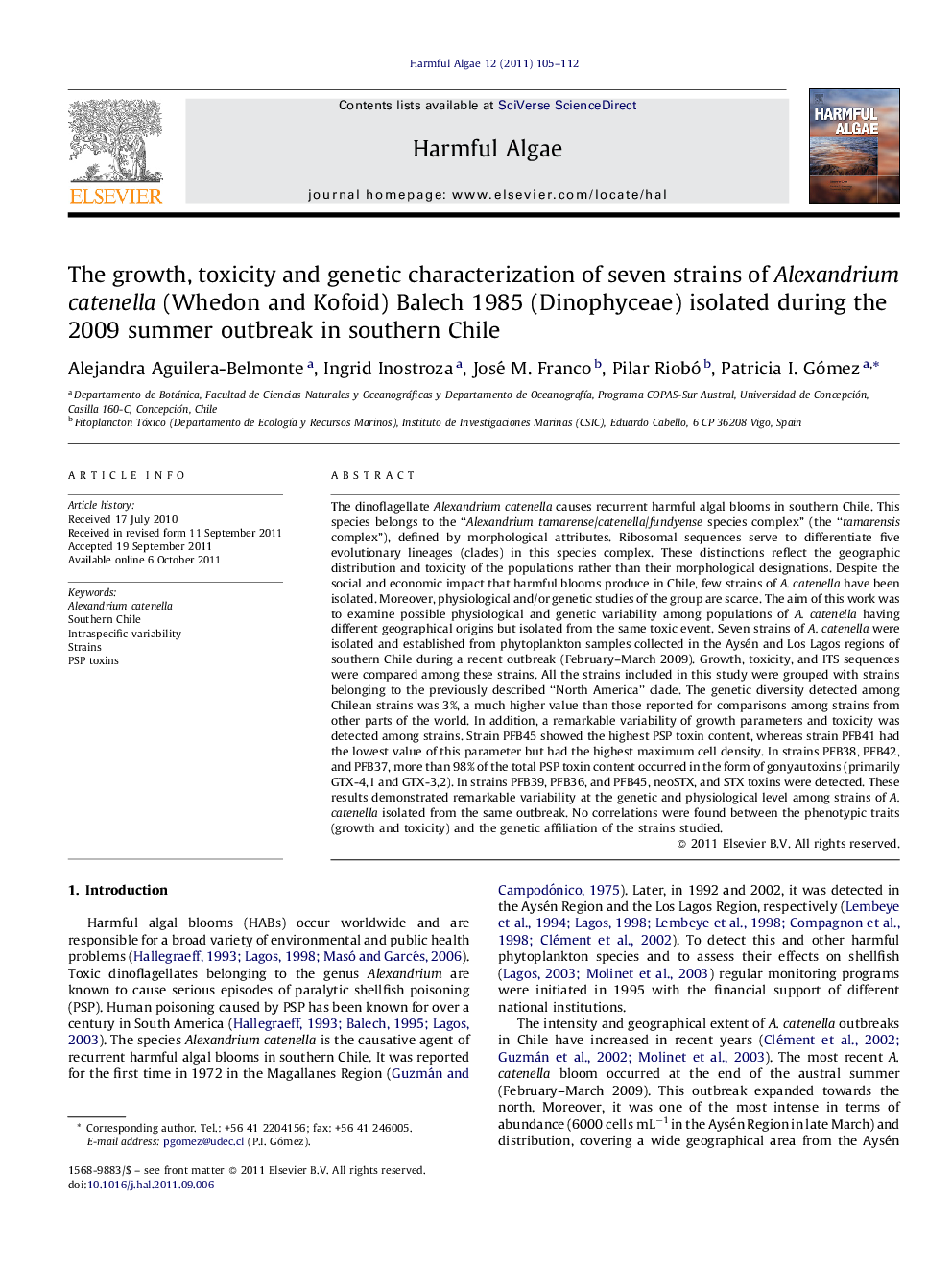| Article ID | Journal | Published Year | Pages | File Type |
|---|---|---|---|---|
| 4545586 | Harmful Algae | 2011 | 8 Pages |
The dinoflagellate Alexandrium catenella causes recurrent harmful algal blooms in southern Chile. This species belongs to the “Alexandrium tamarense/catenella/fundyense species complex” (the “tamarensis complex”), defined by morphological attributes. Ribosomal sequences serve to differentiate five evolutionary lineages (clades) in this species complex. These distinctions reflect the geographic distribution and toxicity of the populations rather than their morphological designations. Despite the social and economic impact that harmful blooms produce in Chile, few strains of A. catenella have been isolated. Moreover, physiological and/or genetic studies of the group are scarce. The aim of this work was to examine possible physiological and genetic variability among populations of A. catenella having different geographical origins but isolated from the same toxic event. Seven strains of A. catenella were isolated and established from phytoplankton samples collected in the Aysén and Los Lagos regions of southern Chile during a recent outbreak (February–March 2009). Growth, toxicity, and ITS sequences were compared among these strains. All the strains included in this study were grouped with strains belonging to the previously described “North America” clade. The genetic diversity detected among Chilean strains was 3%, a much higher value than those reported for comparisons among strains from other parts of the world. In addition, a remarkable variability of growth parameters and toxicity was detected among strains. Strain PFB45 showed the highest PSP toxin content, whereas strain PFB41 had the lowest value of this parameter but had the highest maximum cell density. In strains PFB38, PFB42, and PFB37, more than 98% of the total PSP toxin content occurred in the form of gonyautoxins (primarily GTX-4,1 and GTX-3,2). In strains PFB39, PFB36, and PFB45, neoSTX, and STX toxins were detected. These results demonstrated remarkable variability at the genetic and physiological level among strains of A. catenella isolated from the same outbreak. No correlations were found between the phenotypic traits (growth and toxicity) and the genetic affiliation of the strains studied.
► We examined possible physiological and genetic variability among Chilean populations of A. catenella having different geographical origins but isolated from the same toxic event. ► Seven strains of A. catenella were compared with respect to its growth, toxicity, and ITS sequences. ► Remarkable variability at the genetic and physiological (growth, quality and quantity of toxins) levels was detected among the strains. ► Genetically, all the strains were grouped with strains belonging to the previously described “North America” clade. ► No correlations were found between the phenotypic traits (growth and toxicity) and the genetic affiliation of the strains studied.
